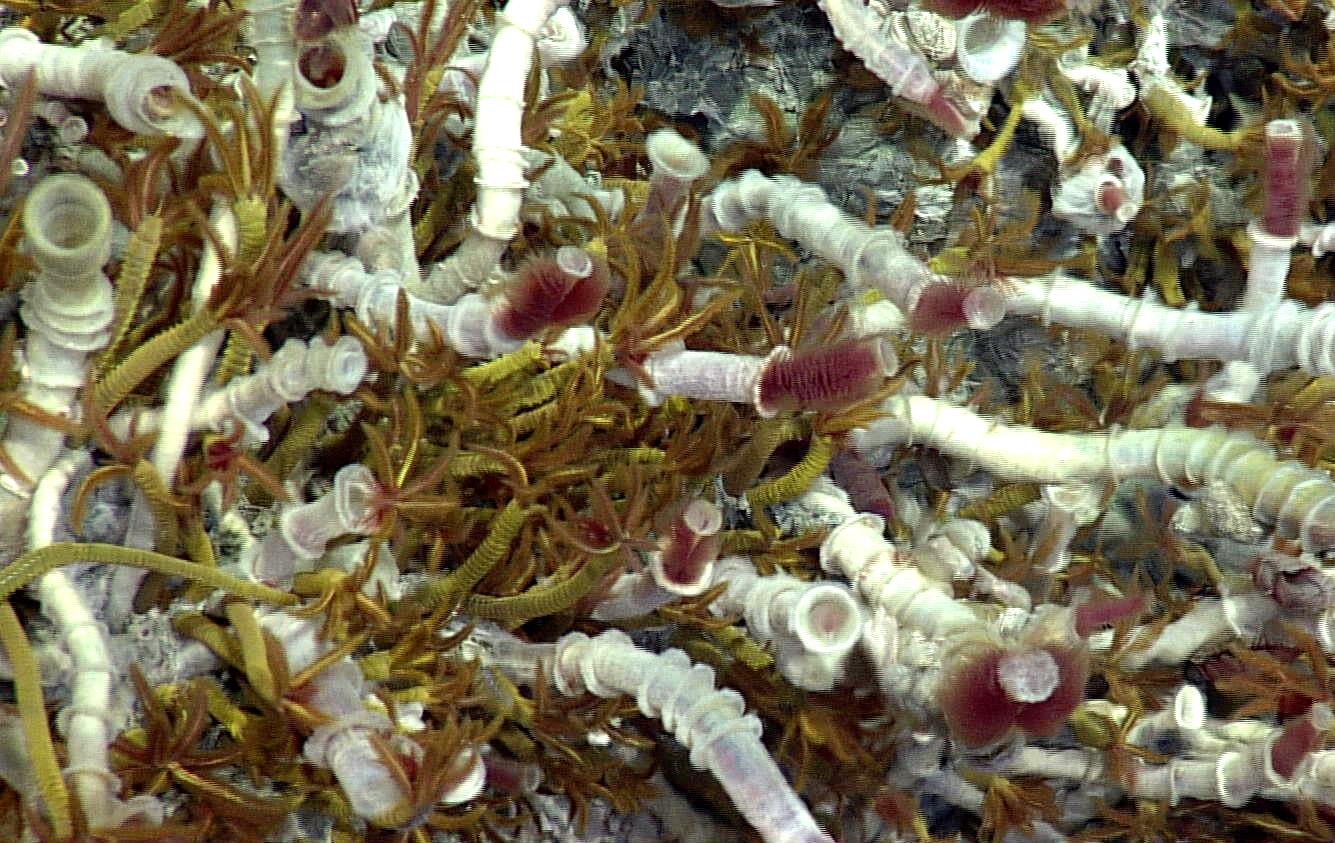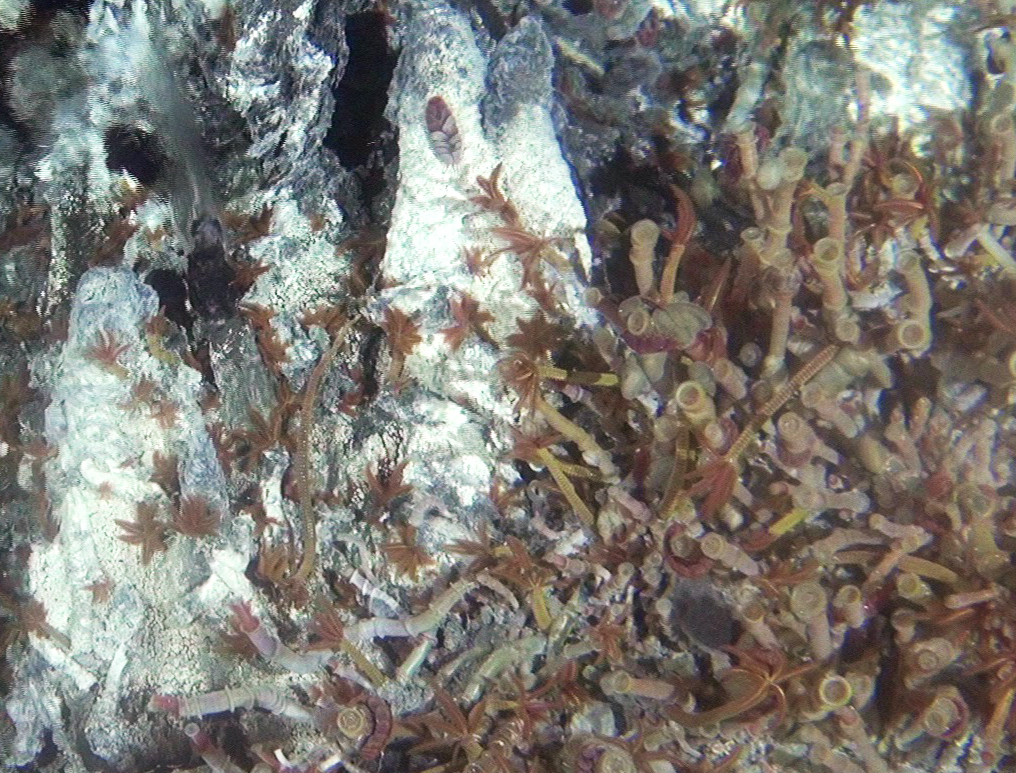Palm Worms (Paralvinella sp.)

Paralvinella sp. are commonly known as Palm Worms. They have feather-like gills that look like palm fronds, which is how they acquired their common name. Although they are deposit feeders, they have no jaws or teeth. Instead, they capture food with their grooved, ciliated tentacles. They have notably high temperature tolerances, with P. palmiformis being known to survive in temperatures as high as 55 deg Celsius. They often co-exist with Ridgeia Tube Worms, living in close proximity to actively venting areas on sulfide hydrothermal vents.
Two species commonly found on Axial Seamount, P. palmiformis and P. pandorae, are morphologically very similar, but are distinguishable by the number of segments along their trunk-like body; P. palmiformis has between 100 and 120 segments, while P. pandorae has around 60. Both grow to be up to 8 cm in length.
Palm Worms excrete a mucus across their bodies, in which can be found a diversity of symbiotic bacterial species. These bacteria may serve to detoxify the worm’s system of metals, which it absorbs from the nearby vent fluids. Another possible function of this bacteria mat is to insulate the worm from high temperature fluids being discharged from the vents.
References:
http://www.ridge2000.org/science/downloads/proposals/2006_feb15/feb15-blackman_donna-lee-lee.pdf
http://www.wallawalla.edu/academics/departments/biology/rosario/inverts/Annelida/Alvinellidae/Paralvinella_palmiformis.html
http://onlinelibrary.wiley.com/doi/10.1111/j.1574-6941.2002.tb01035.x/full












